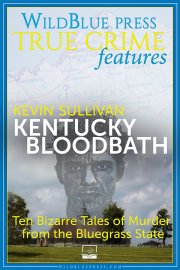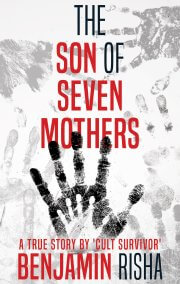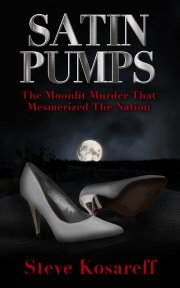
The first person to arrive at the Bauer residence was Officer Jack Kendrick, a nine-year veteran of the Louisville Police Department. As soon as he parked his cruiser in front of the house, he noticed a man walking down the driveway toward him. There were no outside lights turned on, and in the moonlight it appeared that his clothes were wet, as if he’d been splashed with water. But upon closer examination, Kendrick could see that he was covered in blood, and he appeared to be high or intoxicated. Without hesitation, Albert Bauer identified himself and began repeating to Officer Kendrick what he’d told the dispatcher – that his parents had been murdered. This time, however, he became confused as to who had been stabbed and who had been strangled, and it was at this time that Kendrick looked down and noticed the cuts on Bauer’s hands.
As Bauer led the officer to the side door where they entered the house through the kitchen, Kendrick asked if he knew who’d done this, and Bauer said, “No.” Just before stepping inside the home, Kendrick radioed the E.M.S. (Emergency Medical Services) unit, telling them to continue on to this address – code 3 – and that homicide units should be sent as well…Having notified dispatch, Kendrick then drew his weapon and entered a nightmare.
So opens, BLOOD IN THE MOONLIGHT, a chapter from my new book from WildBlue Press, KENTUCKY BLOODBATH; a horrific look at ten strange and bizarre murder tales from the Bluegrass State. If you don’t live in Kentucky, chances are you’ll be unaware of any of these murders, and even those who call the Bluegrass State home, will know very little about these cases. As such, the only folks with a good grasp on the cases are often those who were personally involved in the events. And as a writer, I’m in exactly in the same position per knowledge of the case, until, of course, I delve into myself. And this is what I’d like to share with you today.
The Mechanics of Writing:
No matter what I’m writing about, be it an article, a blog, or a full-length book, the mechanics of the writing process  is pretty much the same: First, there’s the gathering (if possible) of the original police files, which is the heart and soul of the case itself. This (or official documents like court transcripts) must always be the epicenter of the story. It’s the proverbial Holy Grail of the story, and the veracity of all other information that comes to you MUST be judged by what one finds within the case files. Can there be occasional ‘mistakes’ in the official record? Yes, absolutely. But these almost always work themselves out either at other locations within the record, or sometime they’re cleared up by other known and documented facts or by the testimony of others familiar with the situation. These “bugs”, if you will, always seem to get worked out.
is pretty much the same: First, there’s the gathering (if possible) of the original police files, which is the heart and soul of the case itself. This (or official documents like court transcripts) must always be the epicenter of the story. It’s the proverbial Holy Grail of the story, and the veracity of all other information that comes to you MUST be judged by what one finds within the case files. Can there be occasional ‘mistakes’ in the official record? Yes, absolutely. But these almost always work themselves out either at other locations within the record, or sometime they’re cleared up by other known and documented facts or by the testimony of others familiar with the situation. These “bugs”, if you will, always seem to get worked out.
As you may imagine, if one wants to be really effective at any of this, one must read all reports very carefully. It is wise to make notes, underline, highlight, and separate meaningless reports from the golden ones. It’s also exceedingly important to track down all involved parties and convince them – if possible – to speak with you. And if you “sell” yourself well, more often than not, they’ll open up to you.
If all is done properly (fingers crossed!), then your story or book may actually surpass your original expectations for the project! I remember speaking with a forensic pathologist about the murder of a cheerleader who, after discussing the case with me for a few minutes, asked if I was at the crime scene that night. When I told him no, he seemed more than a little surprised, and said: “Well, you know so much about it, I just assumed you were there.”
“No,” I replied “I just make it a habit of digesting the case files before calling my contacts; otherwise I won’t be able to keep up with them.” And that’s the truth.
In part 2, I’ll be discussing the emotional aspects of writing true crime.
So stay tuned…




 Join our email list
Join our email list
Leave a Reply